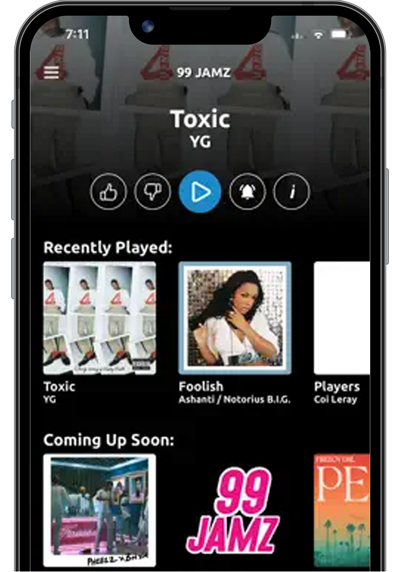Leave salty favorites, sodas and alcohol off shopping list
When you’re hot, stressed and thirsty, certain foods are a bad idea; some speed up dehydration. Here are foods that should be a last resort for storm preparation:
Salty chips, salted nuts and snack foods: These add little nutrition, and your body is going to be stressed. They cause immediate thirst.
Crackers and peanut butter are convenient, but they’re salty and can cause extreme thirst. Peanut butter is a good source of protein, but it’s generally salty. Use it sparingly.
Candy: Most candy has high sugar levels, which contributes to thirst.
Sodas: Your body needs liquids, more in extreme heat and humidity. Better choices are vegetable and fruit juices that can supply needed vitamins.
One caveat: Fruit juices should be given sparingly to infants — they can cause diarrhea, leading to serious dehydration.
Moderate your intake of sports drinks, which have extra sodium.
Alcohol: Don’t run for a cold one. In a situation with downed power lines, broken glass and flooding, wait to celebrate the storm’s end when things have settled down.
Essential foods to make meals palatable
Boiling water will be a best method for cooking with many of these items; remember to use clean water.
1. Couscous and five-minute rice. Pour boiling water over these packages, cover, and let stand.
2. Salsa, chunky pasta sauce
3. Ramen noodles. Pour boiling water over them and voilà!
4. Shelf-stable bacon, hard sausages. Make BLT’s, add to baked beans, bean salad. Keep in cooler once opened.
5. Single-serve condiments (individual packets of mayonnaise, mustard, ketchup and relish)
6. Pouches of cooked tuna, salmon and chicken. Grill chicken or fish fillets briefly for a “real” meal.
7. Shelf-stable milk. Add to canned soup and heat it up on the grill for substance. Put it in coffee, use it for cereal or make chocolate milk for kids.
8. Shelf-stable cheese. Processed cheese (Velveeta) and sliced cheeses made with oil are shelf-stable.
9. Canned potatoes, canned beans and veggies.
10. Individual puddings, fruit cups
How to pack up your kitchen
Must-haves for before a storm and for keeping foods safe afterward.
Heavy-duty plastic bags: “Contractor bags” are the strongest ones out there, and are available at home warehouse stores and Publix. These hold sticks and bricks without tearing; good for packing boxes of food, countertop appliances, and things with sharp corners. They come in 30- and 50-gallon sizes. (They can be slit apart and used as thick plastic tarps for countertops or protecting big items.)
Permanent markers: Use them to label jars and cans that might lose their labels in high humidity or floods. Write contents of cans on their bottoms or tops and date them; label plastic bags or bins to identify items packed within.
Food-sized storage bags or containers: Empty all open packages of foods into these airtight bags or bins to keep them fresh.
Extra water jugs: Preferably 2.5 gallons or larger. Buy the biggest size your freezer will hold.
Heavy-duty plastic garbage cans with lids: Can be used for water storage, packing foods, packing valuables — or storing trash.
Extra coolers: Buy metal ones with foam/plastic inserts for maximum cooling (see ship’s stores or online sources). Buy large Igloo-type coolers that can stack and are on wheels. Buy foam ones to have on hand, but note these are not meant for long-term ice storage. Consider investing in a small cooler that plugs into the cigarette lighter of the car, or a mini-fridge to plug into a generator.
Waterproof storage bins: Flooding during a storm can be more of a problem than winds. Packing everything in plastic, waterproof bins can save the items. For already opened foods, use bins with airtight seals. Use large, clean garbage cans for additional storage.
Preparing for flood conditions
When the kitchen floods, even canned foods can be compromised; those in boxes or cellophane surely are. To prepare your kitchen for flooding:
Pack as many loose foods as possible into plastic, airtight containers. Label with permanent marker. Pack sealed foods in watertight storage bins or heavy trash bags. (Do not use cardboard boxes for packing.)
All opened jars and cans (examples: spices, coffee, popcorn, peanut butter) should be packed in heavy-duty plastic bags, or plastic waterproof storage bins; label them, then pack into larger storage tubs.
Clean out under-counter cabinets, including cookware and everything that can rust or be damaged by water.
Unplug all appliances that aren’t essential. Pack in plastic bins and wrap boxes with plastic sheets or bags.
Use a permanent marker to write the contents of cans on their tops or bottoms in case labels are lost.
Emergency travel bin
Matches, adapter for car that converts plug-in devices to operate from the car cigarette lighter
Sterno, or canned heat source
Small saucepan
Tea kettle
Metal utensils
Can, bottle openers
Paper plates, cups, towels, disposable utensils
Wet-wipes
Condiment packets
Instant coffee, tea bags
Individual drink mix packs
Shelf-stable milk, juices
Canned foods
Ramen noodles, couscous, instant rice
Salsa or pasta sauce
Foil packets of tuna, salmon or chicken
Bottled water
Baby food
Pet food
© 2020 Cox Media Group

:quality(70)/cloudfront-us-east-1.images.arcpublishing.com/cmg/2O2W2FDWNRAVDHGLCVDZQG4MY4.jpg)



:quality(70)/cloudfront-us-east-1.images.arcpublishing.com/cmg/4C72UW44UZDA7DJBKLZRVTAOXE.png)
:quality(70)/cloudfront-us-east-1.images.arcpublishing.com/cmg/6KLOW47KTZADDDGV4BCWXD4VQA.png)
:quality(70)/cloudfront-us-east-1.images.arcpublishing.com/cmg/3CEDK6ZEAFGKHDXM4B2B5DDHNA.png)
:quality(70)/cloudfront-us-east-1.images.arcpublishing.com/cmg/ODB72V7CS5H3VHUPMFHQMAIMXA.png)
:quality(70)/cloudfront-us-east-1.images.arcpublishing.com/cmg/576KYBCOBNHVZMGNPY2EIHBBBE.png)
:quality(70)/d1hfln2sfez66z.cloudfront.net/06-14-2024/t_70d9205a7617440485e0748bc7812029_name_file_1920x1080_1200_v3_1_.jpg)
